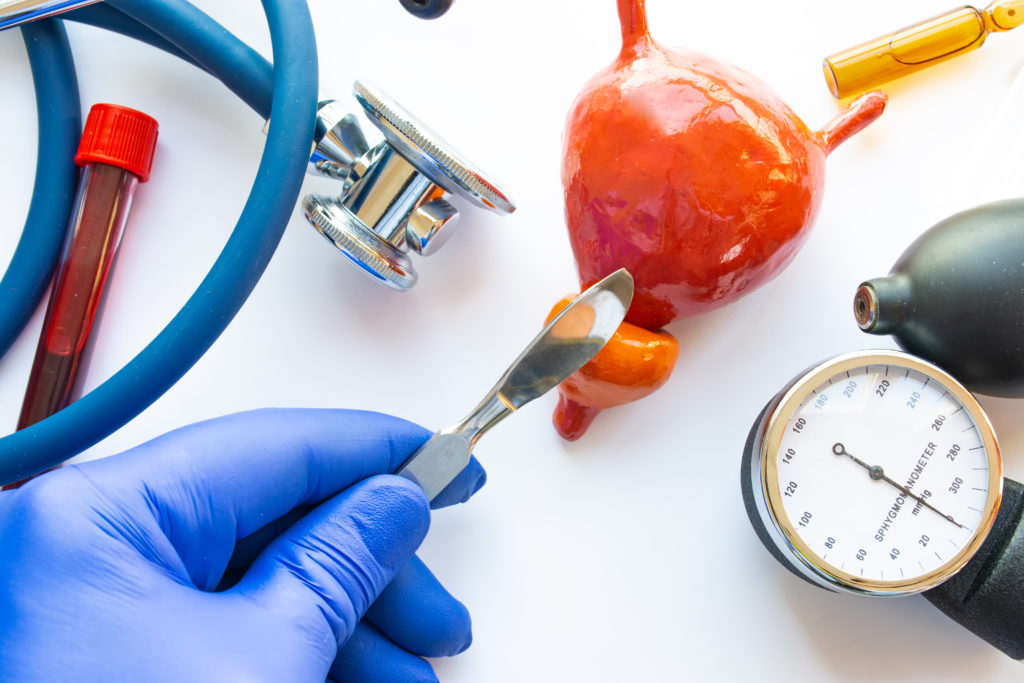This may not be very exciting news but if it’s any consolation, you are not alone if penis shrinkage is a concern of yours.
The penis can shrink permanently by about half to an inch and if you’re wondering what are some of its possible causes, we reveal them below.

THE PENIS:
A SUMMARY
Urination, ejaculation and erection are the primary functions of the penis.
As years go by, it is natural for humans to experience physical changes. All areas of the body including the male reproductive anatomy will go through a series of changes throughout the span of a lifetime.
As a boy hits puberty, the body starts to produce testosterone and he’ll start to experience physical changes such as the testes, penis, scrotum and pubic hair will start to grow.
Though in his 40s, the testosterone level may start to reduce and a man will again notice some changes such as the thinning of pubic hair as well as changes to the shape and size of the penis.
Change is natural but besides nature taking its course, there are also other possible reasons that could change the size of your penis such as Peyronie’s Disease.

WHAT IS PEYRONIE’S DISEASE?
Pronounced as Peh-Row-Neez Disease, Peyronie’s Disease develops when scar tissue (better known as plaque) forms under the skin of the penis and causes an unnatural curve in the penis, leading to painful erections. Depending on where the scar tissue develops, it could also cause the penis to have an hourglass shape. Unnatural curves to the penis can make sexual intercourse painful and difficult. As a matter of fact, for some men, sexual intercourse could be impossible too as it might be difficult to get or maintain an erection.
If you’ve a slightly curved penis naturally, not to worry, this does not mean that you have Peyronie’s Disease. It is natural for men to have a slightly curved penis when flaccid or erected.
Instead, Peyronie’s Disease is a condition that develops overtime. Some of the possible causes include due to an injury to the penis from vigorous sexual activities or sports, an autoimmune disease and diabetes.
Though in his 40s, the testosterone level may start to reduce and a man will again notice some changes such as the thinning of pubic hair as well as changes to the shape and size of the penis.

WHAT ARE THE SIGNS THAT I SHOULD LOOK OUT FOR?
The symptoms of Pyronie’s Disease range from mild to severe. Knowing the symptoms is important as it will help you identify if there is a need to visit a doctor. Some of the signs and symptoms of Peyronie’s Disease include:
- Pain during sexual intercourse or an erection.
- Hard lumps can be felt on one or both sides of the penis.
- Erectile dysfunction.
- A change in the shape of the penis such as narrowing or shortening.
- An upward or downward curve to the penis.
Peyronie’s Disease can cause high levels of stress and anxiety among men. The exact cause of this medical condition is still unknown to the medical world but there are some risk factors that could increase your risk of the disease.
They include:
- Ageing
- Diabetes
- Those who have a family History of Peyronie’s Disease
- Have an autoimmune disorder
WHAT ARE THE TREATMENT OPTIONS AVAILABLE?
Treatments range from non-surgical to surgical options. Ultimately, the goal of the treatment is to reduce pain, restore your ability to have sexual intercourse and a straight (or close to straight) penis.
There are also instances whereby you may not require any treatment and among some men, there is a small chance that the symptoms may disappear without medical intervention.
If treatment is required, here are some of the options:
- Injection: At the initial stage of the disease, this is a possible option whereby your doctor will inject medicine into the plaque to help break down the build-up of the substance. It could also help to reduce pain.
- Medication: Oral medication is another option that can help to reduce the size of the plaque.
- Surgery: Surgery may be recommended among men whose symptoms have not improved, has a curved penis that prevents sexual intercourse and feels pain. There are various surgical options available and your doctor will discuss the options with you.

The National Institute of Diabetes and Digestive and Kidney Diseases in the United States reported that Peyronie’s Disease affects about 23 percent of men between the ages of 40 to 70.

IS IT COMMON?
The National Institute of Diabetes and Digestive and Kidney Diseases in the United States reported that Peyronie’s Disease affects about 23 percent of men between the ages of 40 to 70.
However, it is possible that the numbers could be higher as some men could be embarrassed and instead, suffer in silence.
Peyronie’s Disease can affect anyone and if you’re feeling shy about it, the best person to speak to is a urologist. Not to worry, you will not be judged as your doctor’s priority is to help you manage the symptoms of this disease.
3 other possible causes of penis shrinkage

#1 PROSTATE SURGERY
Men who have undergone a radical prostatectomy (a surgery that involves removing a cancerous prostate gland) may experience penis shrinkage. While the exact reason as to why men experience this post-surgery effect is unknown, it is not an uncommon side effect.
A report found in the International Journal of Impotence Research revealed that 70 percent of men experience penis shrinkage after a radical prostatectomy. The usual range reported is about 0.5 to 0.75 inches in reduction (when flaccid).

#2 MEDICATIONS
Some types of medications such as antidepressants and those prescribed to treat enlarged prostate may reduce the size of the penis. A 2014 study reported in the Journal of Sexual Medicine found that men who had taken medication for their enlarge prostate experienced smaller penis size and lesser sensation.
Speak to your doctor if you’re concerned that your medication might be affecting your sexual life in one way or another. It’s also important to weigh the pros and cons and do note that not all men may experience this side effect.

#3 SMOKING
Smoking can affect blood flow around your body, including your penis. The flow of blood to your penis is especially important to achieve an erection. When blood flow is limited or blood vessels are damaged, the penis will not achieve an erection and it could also reduce the length of the penis.
Studies have also found a link between smoking and erectile dysfunction.
While the above factors may not be modifiable, smoking is one factor that can be avoided entirely. If you need help to quit smoking, your community pharmacist will be able to guide you on the tools and steps to take.
5 FACTS ABOUT THE PENIS
- FACT #1 The penis does not have a bone but it can break.
- FACT #2 A healthy man has three to five erections when asleep at night.
- FACT #3 The size of a penis is not linked to a man’s foot size.
- FACT #4 An erected penis can point in any direction such as upwards, downwards, straight ahead, left or right.
- FACT #5 Semen is more than just sperm. It’s also made out of water, vitamin C, potassium and zinc.
Sources: WebMD, Medical News Today, NHS UK.













